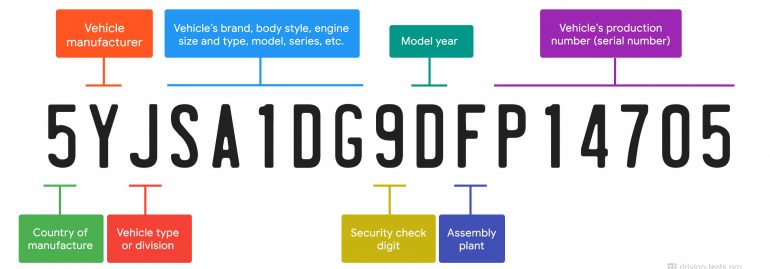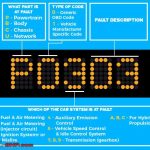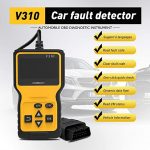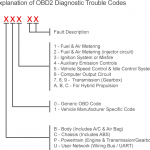If your car is throwing trouble codes, it is time to visit the mechanic. In this article, we will go over how to interpret P0xxx, P0430, and P0401 trouble codes. These codes are indicators of various problems with your car’s engine. They also indicate whether there are any pending repairs that should be done on the car. To find out what these codes mean, keep reading this article! You’ll be able to solve most of these problems, so you can get on with driving your car again soon!
P0xxx code
There are two ways to diagnose trouble codes, using the service manual and a car code reader. First, you need to determine the cause of the code. If your vehicle is not running at its best, the code may be an indicator that your vehicle has a problem. After two failed driving cycles, the freeze frame will be stored. The codes may be of different kinds, such as fuel injectors, ignition system, auxiliary emissions controls, or idle control system.
For example, if your vehicle has trouble code P0xxx, the check engine light will not illuminate. The problem could be related to the oxygen sensor. When this occurs, the PCM will send a message to the car’s dashboard that outlines the problem. Afterwards, it will illuminate the check engine light. Trouble code P0xxx can be either a pending or an active fault. Pending codes are not illuminated on the dashboard and are caused by intermittent faults. These codes are set on the vehicle’s computer memory when it performs two consecutive warm-up cycles. After 40 warm-up cycles, the trouble code will disappear from the memory.
Most trouble codes start with the letter “p,” and are related to the powertrain. You can also find troubleshooting videos for specific codes. Professional scanners will have information about a specific manufacturer. You can use the “P” codes to diagnose a powertrain problem, whereas the “C” and “U” codes refer to the chassis or body systems. Other codes may be related to a malfunction in a computer or communications system.
P0x25 code
A P0x25 trouble code indicates your car’s ignition system is malfunctioning. In the most common scenario, this code can lead to an engine knocking noise. To make your diagnosis easier, you can consult Technical Service Bulletins (TSBs) for this problem. TSBs usually list the common causes of this error code and provide information on how to diagnose it. Mechanics also follow specific steps when diagnosing a P0x25 DTC. They check for the problem with a scan tool to determine the exact cause.
The cause of a P0x25 error code is usually unrelated to your computer’s hardware. For instance, if you encounter this error code on your computer, the problem may be caused by a variable called M*XPYBZ9IU-PV-G6. It is important to note that these problems can occur with many different computer models. If you see a P0x25 code on your computer, you should consult a technician immediately.
Another common cause of a P0x25 error code is a faulty sensor or circuit. Damaged sensors or metal deposits in the connection between the sensor and the PCM can send this error code. Damaged connectors or circuitry can also cause this error code. If you have any doubts about the source of your P0x25 trouble code, contact a mechanic to diagnose the problem. The problem might be a simple fix or a more complex one.
P0401 code
If your vehicle’s check engine light is on, you may have received a P0401 trouble code. This light indicates that there’s a problem with your car, and can mean a number of things. To determine what’s causing the error, you’ll need to diagnose the problem with an OBD II scanner. If you’re unsure of what to look for, here are some things to keep an eye out for.
Your car may have this code if you’re driving with high fuel levels. The cause of this problem can range from a bad temperature sensor to a clogged EGR valve. Some of the common components to check include the EGR valve itself and the control solenoid that controls it. A faulty EGR valve may cause your engine to bog down while driving and could lead to internal damage. To get the most accurate diagnosis and repair, it’s important to have the vehicle diagnosed by a professional mechanic.
Faulty EGR valves can cause the P0401 trouble code. EGR valves send exhaust gas back to the engine and can become stuck due to carbon buildup or wear. Cleaning and replacing this component every 20 thousand miles is recommended. However, if your EGR valve is still stuck, it’s time to replace it. Fortunately, the replacement of the EGR valve can prevent a P0401 trouble code from showing up again.
P0430 code
A vehicle that displays the Trouble code P0430 has several possible causes. It could be caused by a damaged catalytic converter or a leak in the exhaust system. There are also other issues with the engine, including a bad oxygen sensor or a malfunctioning catalytic converter. To determine if this is the case, look for any of the following symptoms. If none of these symptoms applies to your vehicle, contact your mechanic.
While there are some do-it-yourself solutions for this issue, you may be better off taking your vehicle to a mechanic. A mechanic can perform diagnostic tests and repair any problems that may be causing this code. Although you may have a DIY solution, the only way to know if it will work is to have your vehicle scanned by an expert. After all, the repair of this code may be as simple as replacing a bad catalytic converter.
Although trouble code P0430 may not seem like a big deal, it should be taken seriously. Even though it might seem harmless, it could result in expensive repairs. Fortunately, the majority of issues related to a P0430 code aren’t dangerous, but an incorrect diagnosis could result in thousands of dollars worth of damages and months or even years worth of repairs. If you take the wrong action, it could lead to a misfire and potentially dangerous emissions. But the good news is that P0430 is a harmless error and rarely causes harm to your car.
P0420 code
DTC P0420 means that your car’s catalytic converter is not functioning properly. This component of the emissions system breaks down exhaust pollutants before they are released into the atmosphere. Trouble code P0420 usually means that the catalytic converter on bank one is not fully functioning. Other causes may be present, too. In such cases, you need to take your car to a certified repair shop for a proper diagnosis. Trouble code P0420 can also occur when your car’s exhaust system has holes or cracks in it.
If your car is getting this trouble code regularly, you should consider replacing your catalytic converter. This may involve updating the PCM and repairing any exhaust leaks. It is also wise to replace your front and rear oxygen sensors. You should also check your exhaust system for any misfiring problems. If you do not perform these steps, you might end up wasting money on a costly and unnecessary replacement of your catalytic converter.
While the P0420 code won’t produce any symptoms, it may signal that something is wrong with your car’s catalytic converter. If the converter is damaged, its internal parts could come loose, blocking the exhaust flow. This would result in harmful emissions for your car and the environment. While a faulty catalytic converter is the most common cause of trouble code P0420, other possible causes include a faulty oxygen sensor or an intake leak. Finally, your vehicle could be experiencing a malfunction if it’s placed in the wrong place.
P0452 code
If you notice that your check engine light is on, it may be because the Engine Light has been illuminated or you need to service the engine soon. While it may not cause any noticeable drivability issues, you should see a mechanic to clear this trouble code. The mechanic will reset your car’s engine computer and re-test the system to determine the underlying cause. If the gas cap has become loose, you can tighten it to prevent the code from reoccurring.
The error code P0452 is related to the evaporative emission control system. It indicates that there’s a problem with the evaporative pressure sensor and fuel tank. This is usually due to a leak or a loose fuel gap. The code is common in cars and trucks built after 1996, and the cause varies depending on the vehicle’s make and model. To clear the code, you’ll need to replace the evaporative pressure sensor and fuel filter.
Another common cause of this trouble code is a damaged gas cap. If this is the case, the fuel pressure sensor should be replaced. It may also be a failure of the EVAP system. To test for this problem, you should try to drive your car 100 miles and check for a leak. In case the EVAP system is malfunctioning, you may need to replace a part in your vehicle. Trouble code P0452: What Causes It?






I couldn’t find for my 2005 vz auto ute v6 transmition won’t shift into top gear